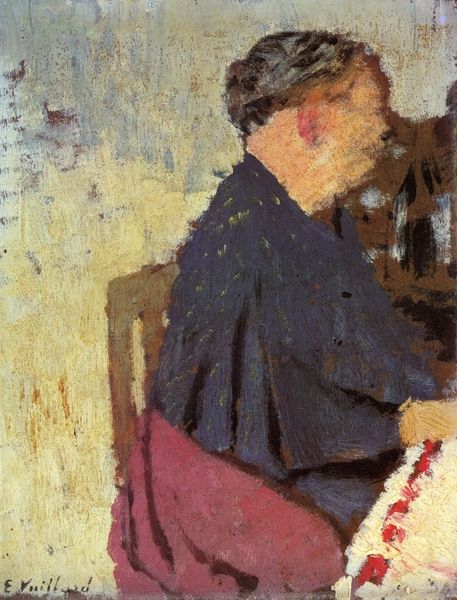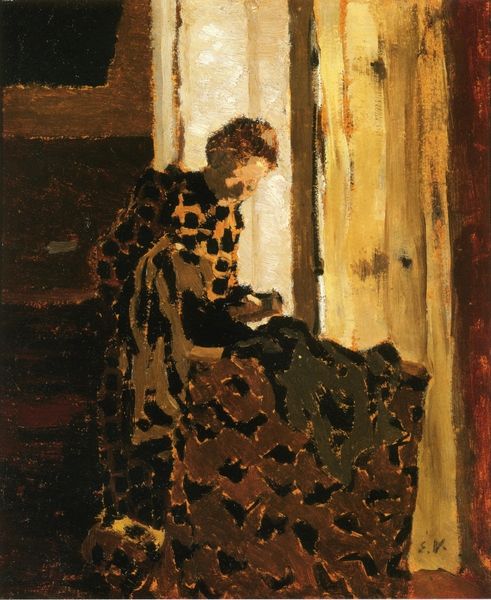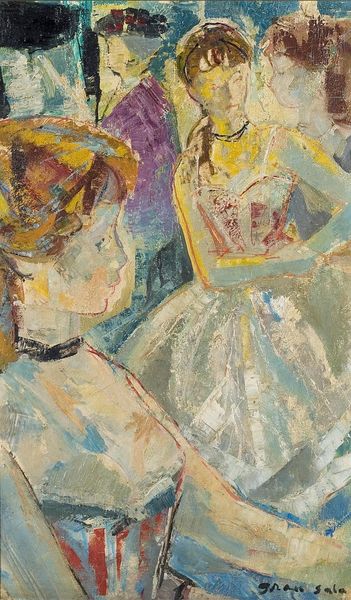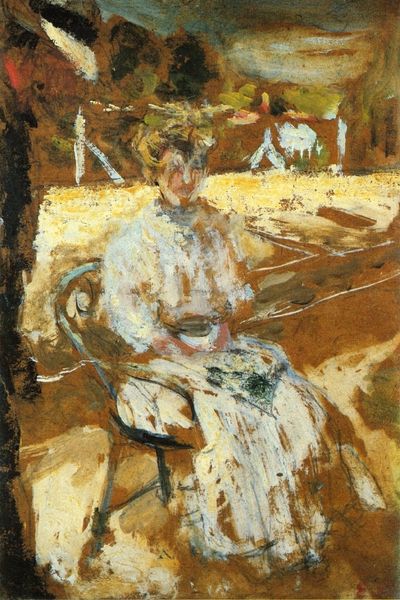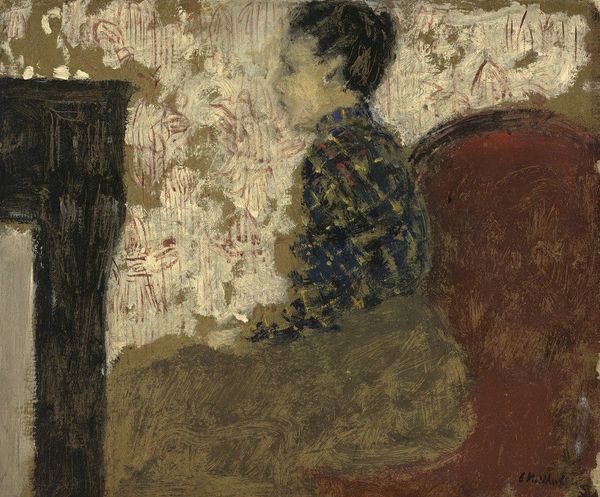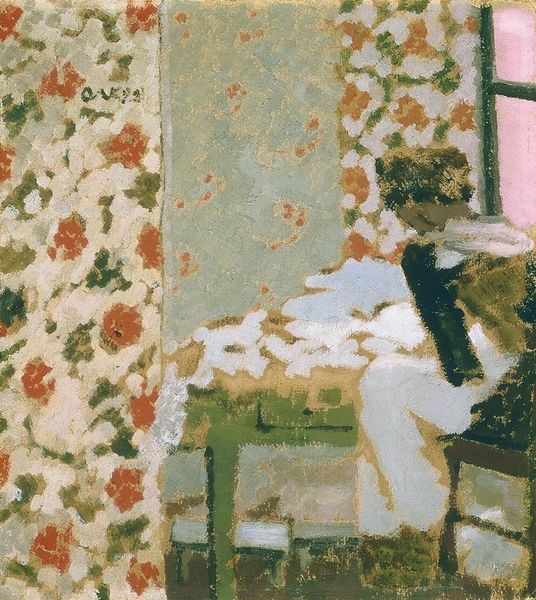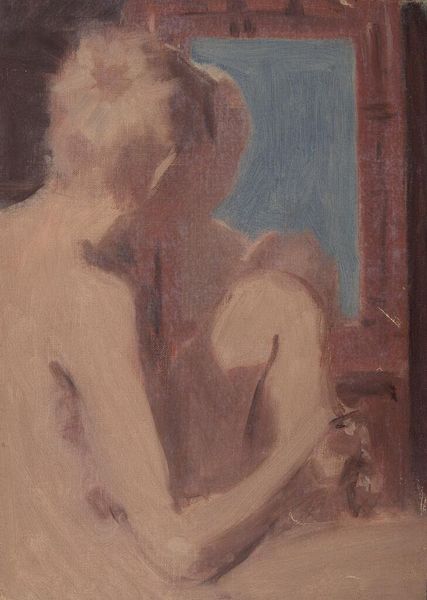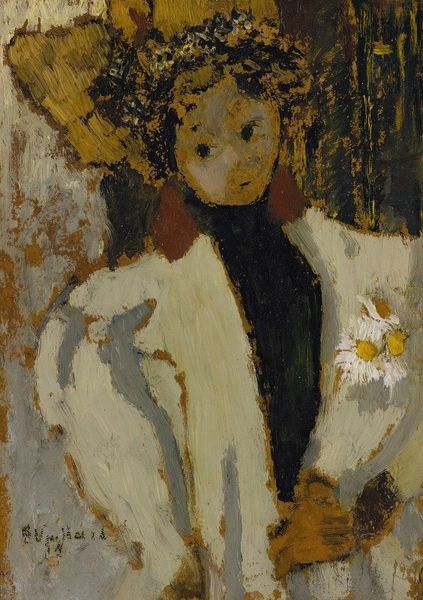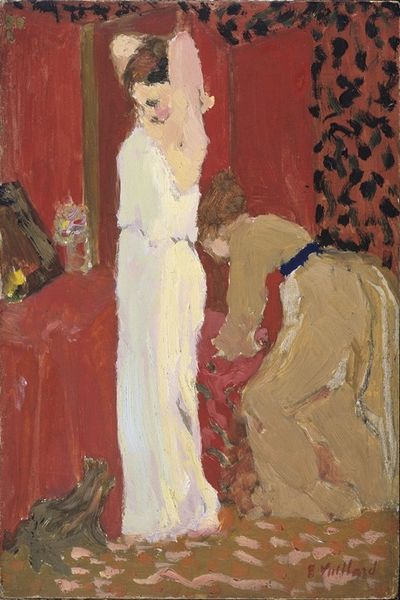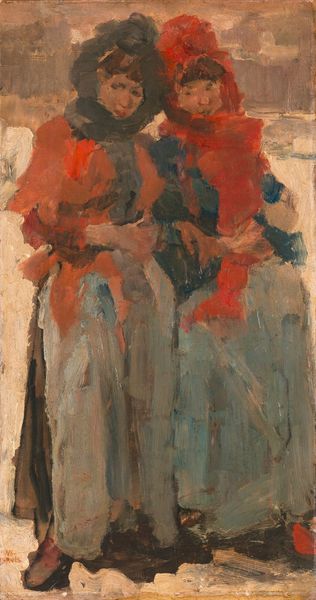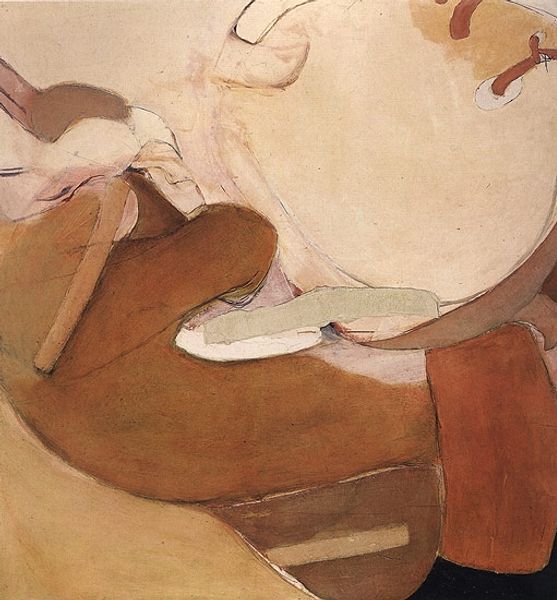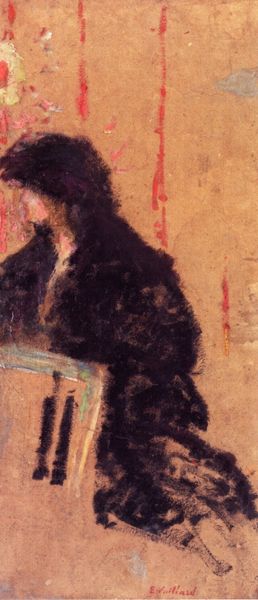
Dimensions: 20 x 14 cm
Copyright: Public domain
Editor: So, this is Édouard Vuillard's "At the Café-Concert" from 1898, an oil painting currently housed at the Musée d'Orsay. What immediately strikes me is how the artist uses color and texture to create a really intimate, almost hazy atmosphere. It’s very dreamlike. What do you see in terms of its composition and technique? Curator: Formally, I see a flattening of space. Observe how Vuillard merges the figure with the background, blurring the lines between subject and setting. The patterned dress almost dissolves into the wallpaper. Consider also the restrained palette—muted browns, whites, and purples—creating a unified, almost tonal quality. The brushstrokes, short and broken, contribute to a shimmering effect. Do you notice how the lack of a clear focal point draws the eye across the entire surface? Editor: Yes, absolutely. There isn't a strong sense of depth, it's like everything exists on the same plane. Are you suggesting the lack of a traditional focal point challenges conventional portraiture? Curator: Precisely. Vuillard rejects academic ideals of representation. Instead, he explores the formal qualities of painting itself—the interplay of color, texture, and form. It's less about depicting a specific person or event, and more about the abstract arrangement of visual elements. The painting operates almost as a field of vision. Editor: That makes a lot of sense. I initially thought the moodiness came from the subject, but I see it’s also intrinsic to the artistic choices. The form dictates the feeling. Curator: Indeed. The subdued color palette and textured brushwork aren't merely descriptive, they're integral to the work’s evocative power. Editor: I never would have thought about it that way.
Comments
No comments
Be the first to comment and join the conversation on the ultimate creative platform.
